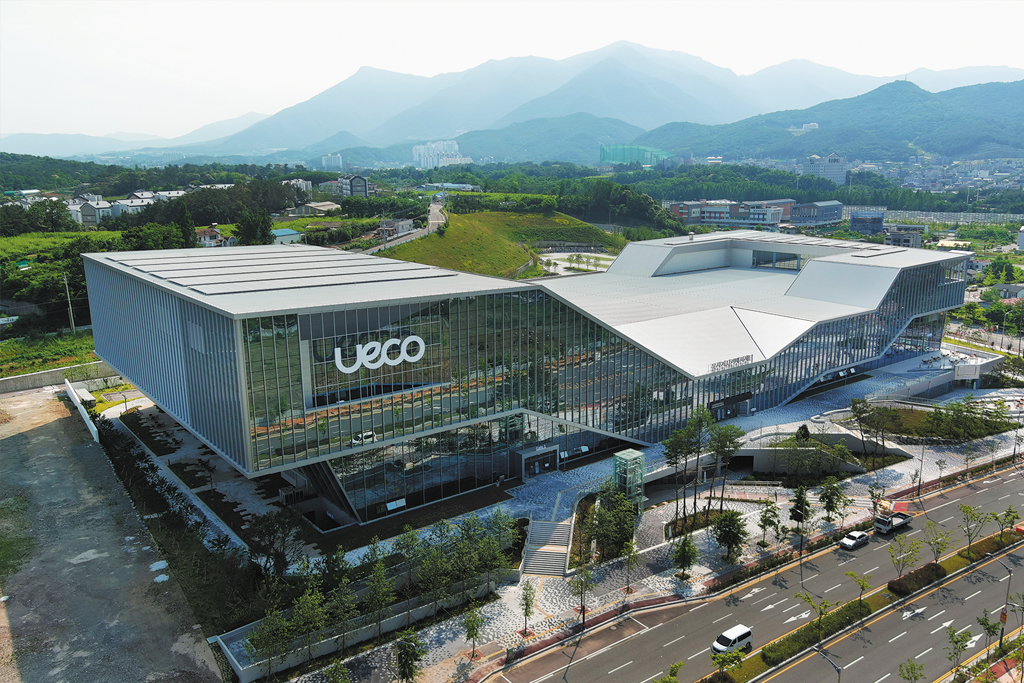Already known as an economic hub in South Korea, Ulsan is now looking to establish itself as an obvious choice for MICE activities
The city is presenting its infrastructure and various MICE products at ITB Asia this year.
Ulsan is South Korea’s seventh-largest metropolis with over a million people living there. The city is located in the south-east of the country, is a major port, and is considered the industrial powerhouse of South Korea, particularly with the presence of one of the world’s largest automobile assembly plants, operated by the Hyundai Motor Company. Ulsan, the economic hub of Korea, is a city that has achieved a rare level of rapid economic growth. The metropolis is not only a stronghold of the automobile industry, it is also a leading location for the petrochemical industry, renewable energy and shipbuilding activities.
Ulsan is well connected to the rest of South Korea by air as well as high-speed train. Travellers can get from Seoul to Ulsan by high speed train in just two hour and it is even faster from other MICE cities, like 20mins from Busan and 10mins from Gyeongju.
Thanks to its strong economic background, Ulsan is a new destination for MICE tourism in South Korea. The city administration is now concentrating its efforts to promote Ulsan as a unique MICE city, attracting the market with its infrastructure as well as its history and culture.
Bangdu-Dae Petroglyphs, the discovery that changed world’s history
The Bangu-dae Petroglyphs were listed on the tentative list of UNESCO World Heritage Sites. Whales are one of the main animals the petroglyphs represent as the area carries the legacy of one of the world’s first whaling industries. Ulsan is the only city in Korea where real whales can be observed. There is a dedicated museum in Jangsaengpo as well as various whale-themed activities.
Discovering Ulsan’s proud industrial heritage in a tour
Ulsan recently launched a tour programme for MICE participants which highlights the city’s industrial heritage. Participants can visit Hyundai Motor’s Ulsan plant, where an average of 6,000 cars a day and 1.4 million cars a year are completed on site, while over thousands of cars are lined up to be exported on a 60,000-tonne-plus dedicated car ship. This tour aims to give visitors a demonstration of Korea’s technical skill.
As Ulsan is Korea’s number one petrochemical producer with €75.5 billion in revenue from 292 companies. Travellers can learn about the sector by visiting various promotional centres that provide an overview of the petrochemical industry.
Ulsan is also known for shipbuilding and is home to the world’s fifth largest shipbuilder, Hyundai Heavy Industries & Hyundai Mipo Shipbuilding. MICE groups can visit sites and see workers building various ships, including giant container ships.
STAND J 05
Photo: Convention Center
Becoming an eco-friendly city
The rapid growth of industrial development has long been linked to environmental pollution. However, in the last 20 years, Ulsan has taken major environmental improvement actions. For example, Taehwa River, which flows through Ulsan centre, has been recognised as the second national garden of Korea. Today it is an eco-friendly park where nature and people coexist. Visitors can observe salmon and various types of fish in the river as well as thousands of crows and the Milky Way path made up of bamboo forest.
Ulsan Exhibition and Convention Centre
Ulsan inaugurated its Exhibition and Convention Centre (UECO) in 2021. The multi-functional complex can accommodate diverse exhibitions, international conferences, seminars and cultural performances with a surface area of 43,000 sqm and a capacity of 1,400 delegates for its convention hall. Ulsan also established the MICE Alliance cooperation system to foster MICE activities.

